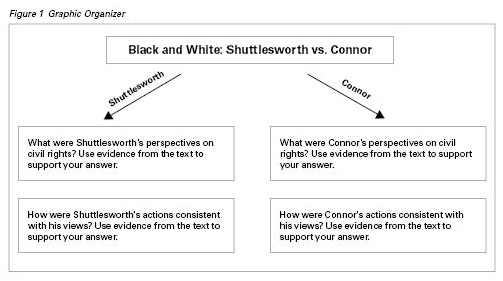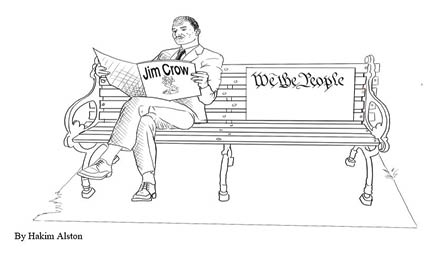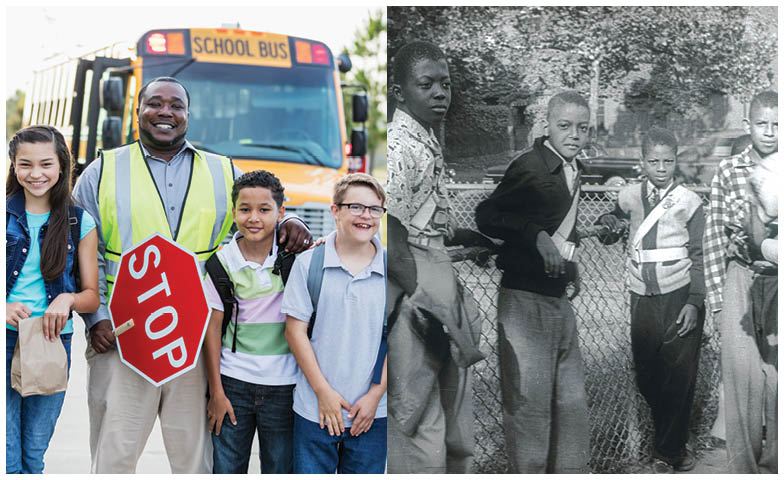2020 has seen eruptions of violence and protests across the country due to racial injustice and the continued denial of basic human and civil rights to people of color. These events have forced many Americans to face an uncomfortable and discouraging realization: America has yet to live up to the legacy and promises of the 1960s Civil Rights Movement.
Too often, students view the Civil Rights Movement as a chapter in U.S. history that is far removed from their daily lives. The people and events of the 1950s and 1960s are snapshots in time that they have learned about in school and, for many, they hold no relevance to them. However, the riots and protests that center around the death of George Floyd have the potential to show students how the past connects to the present. Middle school social studies teachers can use current events to illustrate how certain issues from the past are unresolved and how the past—its people and events—has meaning in their daily lives.
Teachers may use trade books as a means to examine historical figures, events, and concepts in more depth (Schell & Fisher, 2006). Brimner’s (2011) Black and White: The Confrontation Between Reverend Fred L. Shuttlesworth and Eugene “Bull” Connor focuses on how two men’s paths were destined to clash and shape the future of civil rights in Birmingham, Alabama. Some of the most iconic moments in the Civil Rights Movement played out on the streets of downtown Birmingham. I provide two activities that utilize Black and White to provide students with the opportunity to analyze the perspectives of Shuttlesworth and Connor, the causes of pivotal events, and how the past impacts the present.
Shuttlesworth vs. Connor: Examining Their Perspectives
History is full of historical figures who engage in confrontations due to their polarizing views. For example, The opposing ideologies of Alexander Hamilton (a Federalist) and Aaron Burr (a Democratic- Republican) led to personal acrimonies and resulted in political and personal mudslinging and, finally, Burr’s death at Hamilton’s hands. Conflicts over divergent views are rarely simple or due to one reason. Graphic organizers aid students in comparing historical figures’ views, values, and biases.
Graphic organizers are ideal for students to compare Shuttlesworth and Connor’s views about civil rights. The teacher selects pages 83-85 as an excerpt from Black and White (Brimner, 2011) that illustrates Shuttlesworth and Connor’s views on equality, integration, and preservation of the South’s segregation laws. Students read and annotate the text in pairs. They highlight and define words they do not know and summarize the text in their own words. The examples of each man’s views on civil rights are underlined. By annotating, students look for main points, question the text, and think about their own thinking.
Graphic organizers allow students to organize information logically when writing a narrative or essay. This activity requires students to use the fully annotated text to complete a graphic organizer that helps to deconstruct the text (see figure 1 for a sample graphic organizer). Then, the teacher brings the students together to discuss their responses. This debrief is important because students share the rationale for their responses. The teacher may also ask guiding questions to encourage students to think deeper about the text. Example questions are “How might the culture and conditions in the South have impacted Shuttlesworth and Connor’s perspectives?” and “What were Shuttlesworth and Connor’s motives in staging and stopping protests in Birmingham, respectively?” The graphic organizer and subsequent discussion provide students with the opportunity to analyze the text in depth and understand how cultural, political, and geographical factors impact people’s perspectives (Barton & Levstik, 2004).

I am text block. Click edit button to change this text. Lorem ipsum dolor sit amet, consectetur adipiscing elit. Ut elit tellus, luctus nec ullamcorper mattis, pulvinar dapibus leo.
Using Historical Monologues to Connect the Past and the Present
The eyes of the country have once again focused on Birmingham, Alabama, in 2020. In the wake of George Floyd’s death, violent and peaceful protests have taken place on the same downtown Birmingham streets that were the sites of similar demonstrations during the 1960s. Teachers can use current events to show how then and now the streets of Birmingham have been ground zero in the African American struggle for identity, culture, and justice (Helfenbein, 2006). In the Civil Rights Movement and the recent uprisings after Floyd’s death, protestors marched in downtown Birmingham over marginalization and the denial of a voice in a democratic society. Teaching students the “power of place” allows them to understand how historic places such as the streets of Birmingham, have the potential to reinforce the realities of the past and evoke emotions that students may find easy to relate to, especially when they see its relevance to their daily lives (National Park Service, 2015; Witherspoon et al., 2017). They may do this through the voice of a person who is emotionally, politically, socially, and/or culturally connected to historical figures or events under study.
In the following activity, I discuss the power of place and historical dialogues to show how issues such as racial injustice, and civil rights connect the past to the present. Historical monologues are a form of perspective writing that allows students to express their understanding of historical figures and events by conveying one’s innermost thoughts, feelings, and motivations. To write the monologue, they use a script format, including a name for the character, a setting, and time, and noting physical movements in parentheses. The prompt is provided below.
Pretend you are a member of the Birmingham Historical Committee. During the recent outbreak of violence in downtown Birmingham, the Confederate memorial was damaged. The Committee has drafted a new monument and is meeting to vote on the proposal. This monument shows Rev. Shuttlesworth sitting on a park bench reading the Jim Crow laws, with the U.S. Constitution next to him on the bench. Write a historical monologue that justifies your “yes” or “no” vote. Provide at least two reasons to support your vote. Explain how this monument may show past and present race issues in America. Use at least two details from the graphic organizer and evidence from the book Black and White (Brimner, 2011) to support your answer.
This activity allows students to make connections between one historical era and another. For instance, while students may have a tendency to see the 1960s Civil Rights Movement as an isolated episode in history, this activity can show how the challenges people of color face today are connected to events from more than 50 years ago. Students can more easily see how certain issues develop and reoccur over time. Writing the historical monologue challenges students to examine the complexities of historical events and people. They explore differing perspectives and make informed decisions based on evidence.
A Fresh Look at an Ongoing Problem
Social studies teachers have the often-daunting task of showing students how important the past is to their daily lives. There may be a tendency to feel like history is relegated to the pages of history textbooks. However, 2020 has revealed to many people that America has persisting issues of racism that refuse to remain in the past and very much affect the present. Social studies classrooms are places where teachers can engage students in activities that encourage the examination and discussion of issues of racial discrimination and the denial of human and civil rights to people of color. These activities show how history is not only complex and multi-layered but allows students to see the legacies of the past in the present.

References
Barton, B. C., & Levstik, L. S. (2004). Teaching history for the common good. Lawrence Erlbaum.
Brimner, L. D. (2011). Black and white: The confrontation between Reverend Fred L. Shuttlesworth and Eugene “Bull” Connor. Calkins Creek.
Helfenbein, Jr., R. J. (2006). Space, place, and identity in the teaching of history: Using critical geography to teach teachers in the American south. In A. Segall, E. E. Heilman, & C. H. Cherryholmes (Eds.), Social studies – the next generation: Re-searching in the postmodern (vol. 272, pp. 111-124). Peter Lang Publishing.
National Park Service. (2015). The “power of place” in the history/social studies methods course. https://www.nps.gov/subjects/ teachingwithhistoricplaces/prof-dev_methods course_outline.htm
Schell, E. & Fisher, D. (2006). Teaching social studies: A literary-based approach. Pearson.
Witherspoon, T., Clabough, J., & Elliot, A. (2017). Marching into Birmingham: Children as agents of social change. Social Studies and the Young Learner, 30(1), 22-26.
Nefertari Yancie, Ph.D. is a middle school social studies teacher at Clay-Chalkville Middle School in Birmingham, Alabama. She has a Ph.D. in Education Studies in Diverse Populations.
![]() mrsyancie@yahoo.com
mrsyancie@yahoo.com
Published in AMLE Magazine, October 2020.
